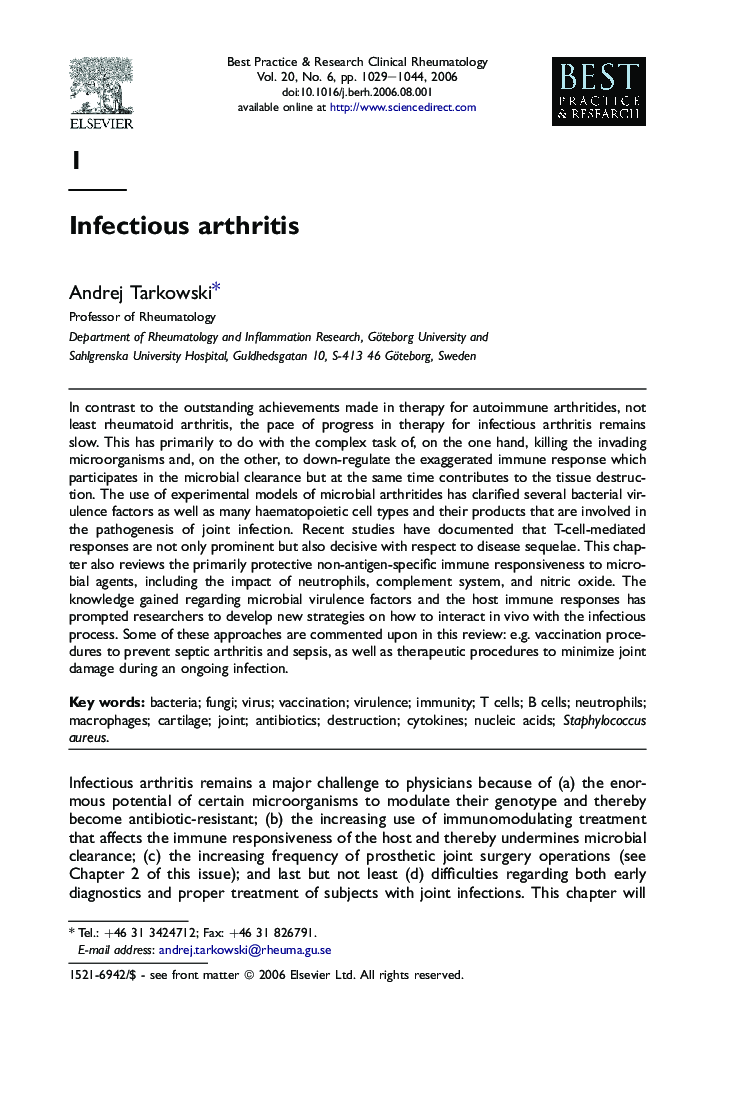| Article ID | Journal | Published Year | Pages | File Type |
|---|---|---|---|---|
| 3343561 | Best Practice & Research Clinical Rheumatology | 2006 | 16 Pages |
In contrast to the outstanding achievements made in therapy for autoimmune arthritides, not least rheumatoid arthritis, the pace of progress in therapy for infectious arthritis remains slow. This has primarily to do with the complex task of, on the one hand, killing the invading microorganisms and, on the other, to down-regulate the exaggerated immune response which participates in the microbial clearance but at the same time contributes to the tissue destruction. The use of experimental models of microbial arthritides has clarified several bacterial virulence factors as well as many haematopoietic cell types and their products that are involved in the pathogenesis of joint infection. Recent studies have documented that T-cell-mediated responses are not only prominent but also decisive with respect to disease sequelae. This chapter also reviews the primarily protective non-antigen-specific immune responsiveness to microbial agents, including the impact of neutrophils, complement system, and nitric oxide. The knowledge gained regarding microbial virulence factors and the host immune responses has prompted researchers to develop new strategies on how to interact in vivo with the infectious process. Some of these approaches are commented upon in this review: e.g. vaccination procedures to prevent septic arthritis and sepsis, as well as therapeutic procedures to minimize joint damage during an ongoing infection.
